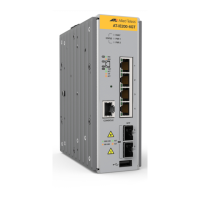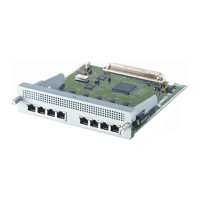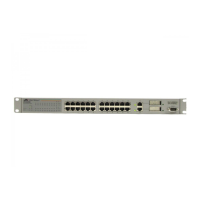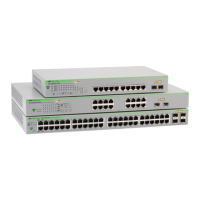C613-50631-01 Rev A Command Reference for IE340 Series 1425
AlliedWare Plus™ Operating System - Version 5.5.3-0.x
BGP AND BGP4+ COMMANDS
NEIGHBOR
COLLIDE-ESTABLISHED
neighbor collide-established
Overview Use this command to specify including a BGP or BGP4+ neighbor, already in an
'established' state, for conflict resolution when a TCP connection collision is
detected.
Use the no variant of this command to remove a BGP or BGP4+ neighbor, already
in an ‘established’ state, for conflict resolution when a TCP connection collision is
detected.
Syntax
neighbor <neighborid> collide-established
no neighbor <neighborid> collide-established
Mode Router Configuration
Usage notes This command must be used only when specially required. It is not required in
most network deployments.
The associated functionality of including an 'established' neighbor into TCP
connection collision conflict resolution is automatically enabled when neighbor is
configured for BGP graceful-restart.
Parameter Description
<neighborid> {<ip-address>|<ipv6-addr>|<peer-group>}
<ip-address> Specify the address of an IPv4 BGP neighbor,
in dotted decimal notation A.B.C.D.
<ipv6-addr> Specify the address of an IPv6 BGP4+
neighbor, entered in hexadecimal in the
format X:X::X:X.
<peer-group> Enter the name of an existing peer-group. For
information on how to create peer groups,
refer to the neighbor peer-group (add a
neighbor) command, and neighbor
route-map command. When this parameter is
used with this command, the command
applies on all peers in the specified group.

